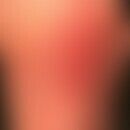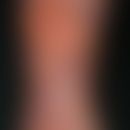Synonym(s)
DefinitionThis section has been translated automatically.
Mixture of about 30 esterified triterpene saponins from the seed of horse chestnut(Hippocastani semen, Aesculus hippocastanum, Cortex Hippocastani).
EffectsThis section has been translated automatically.
Low spasmolytic, antiphlogistic, anti-edematous, increase of capillary permeability (slows down the flow of water into the extracapillary space).
Notice! Percutaneous absorption is questionable!
You might also be interested in
Field of application/useThis section has been translated automatically.
DosageThis section has been translated automatically.
- Systemic: Inital 3 times 20-40 mg/day, then 2-3 times 20 mg/day p.o.
- Topical: In general, 1% external agents are used (e.g. 1% aescin gel); apply thinly 3 times/day in the affected area.
Undesirable effectsThis section has been translated automatically.
With systemic use danger of kidney dysfunction up to kidney failure, danger of thrombosis.
With topical application. Allergic skin reactions (contact urticaria) have been described, but are rather rare. Occupational asthmatic reactions caused by workplace conditions containing aescin have been described in isolated cases.
Standard concentrationThis section has been translated automatically.
ContraindicationThis section has been translated automatically.
Trade namesThis section has been translated automatically.
Reparil® , Venostasin® , Essaven® Gel, Venoplant® Gel
LiteratureThis section has been translated automatically.
- Du Y et al (2016) Combined treatment with low doseprednisone and escin improves the anti-arthritic effect in experimental arthritis. Int Immunopharmacol 31:257-265.
Escribano MM et al. (1997) Contact urticaria due to aescin. Contact dermatitis 37:233.
Luzzi R et al (2011) Aescin: microcirculatory activity. Effects of accessory components on clinical and microcirculatory efficacy. Panminerva Med 53(3 Suppl 1):51-55.
Muñoz X et al,(2006) Occupational asthma related to aescin
inhalation. Ann Allergy Asthma Immunol 96:494-496.Vašková J et al (2015) Antioxidant potential of Aesculus hippocastanum extract and escin against reactive oxygen and nitrogen species. Eur Rev Med Pharmacol Sci 19:879-886.
- Wang K et al (2015) Escin activates AKT-Nrf2 signaling to protect retinal pigment epithelium cells from oxidative stress. Biochem Biophys Res Commun 468:541-547.
- Zhang F et al (2015) Synergistic protective effects of escin and low-dose glucocorticoids against vascular endothelial growth factor-induced blood-retinal barrier breakdown in retinal pigment epithelial and umbilical vein endothelial cells. Mol Med Rep 11:1372-1377.





